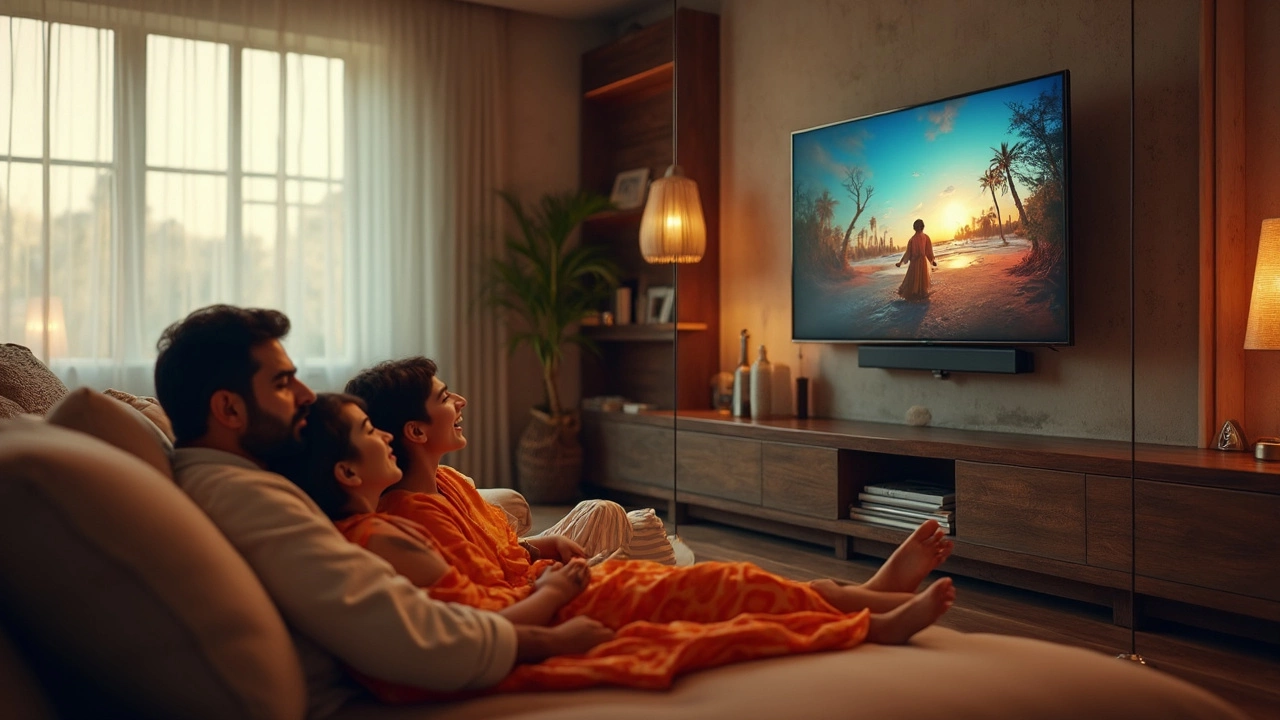TV Down: Quick Ways to Lower Your TV and Boost Comfort
Ever feel like your TV is staring down at you? A high‑mounted screen can strain your neck and make the room feel off‑balance. Dropping the TV a few inches can instantly improve sight lines and give your living space a cleaner look. Below are easy steps you can follow today, plus a few design tricks to keep everything matching.
Pick the Right Stand or Shelf
The first thing to check is your TV stand height. Most media consoles sit between 20‑30 cm (8‑12 in) from the floor, which works for 55‑inch screens when viewed from a typical sofa height. If your stand is too tall, consider swapping it for a lower model or placing a sturdy coffee table underneath and using a short bracket.
When you shop for a new stand, measure the distance from your eye level (usually around 100 cm or 39 in when seated) to the screen. Aim for the screen’s center to be at or just slightly below eye level. That distance often translates to a stand height of about 40‑45 cm (16‑18 in) for a 55‑inch TV and a bit higher for larger screens.
Use Adjustable Mounts or Low Profiles
If a stand won’t cut it, an adjustable wall mount gives you full control. Look for a tilting or articulating mount that lets you lower the TV without drilling a new hole. Many mounts have a low‑profile option that sits just a few centimeters off the wall, making the TV appear to float.
Before you mount, check the VESA pattern on the back of your TV and match it with the bracket. Tighten the screws securely, but don’t over‑tighten—this can crack the frame. Once installed, use the tilt feature to angle the screen slightly downward if your eye level is still a bit high.
Match Your TV Stand Color and Style
A low TV looks best when the furniture around it blends seamlessly. Choose a stand color that echoes other big pieces in the room, like the couch or coffee table. If your sofa is a deep charcoal, a matte black or dark wood stand will create a cohesive vibe.
Don’t be afraid to mix textures—metal legs on a wooden top can add visual interest while keeping the overall height low. Just make sure the stand’s weight capacity exceeds your TV’s. A safety margin of at least 20 % is a good rule of thumb.
Safety First: Secure Cables and Check Stability
When you lower the TV, the cable length often becomes an issue. Use short, high‑quality HDMI and power cords to avoid excess slack that can pull on the back of the TV. Cable management clips or a simple raceway can keep everything tidy.
Give the stand a gentle shake after placement. If it wobbles, add rubber pads underneath or tighten any loose bolts. A stable base prevents accidental tip‑overs, especially if you have pets or kids.
Lowering your TV doesn’t have to be a big project. With a lower stand, an adjustable mount, or a simple DIY shelf, you can instantly improve comfort and give your room a sleek, balanced look. Try one of these fixes this weekend and see how much easier your favorite shows feel to watch.
Should I Tilt My TV Down? Straight Answers for the Perfect Viewing Angle
Wondering if tilting your TV down makes a real difference? This article breaks down when and why you might want to tilt your TV, plus how it affects your comfort and picture quality. Find tips for getting the angle just right, especially if your TV is wall-mounted or sitting high. Learn practical details that can give you a better watching experience—without any jargon. Say goodbye to stiff necks and bad glare for good.





